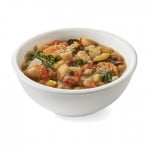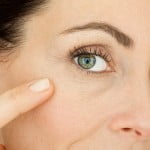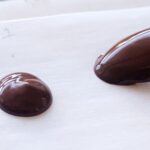
two instances of kids who advanced iodine deficiency highlight the dangers of setting too manyrestrictions on younger children’ diets, researchers say.
The docs stated that the youngsters—aged 2 and five—developed iodine deficiency because their diets lacked salt, dairy products, bread, and other sources of the mineral.
Iodine deficiency is not unusual in growing countries, but was really removed in the u.s. after iodized saltbecome added almost a century ago.
however, it can nevertheless occur if a infant’s food plan is exactly confined, said have a look atcreator Dr. Brigid Gregg. She is a pediatric endocrinologist on the college of Michigan’s C.S. Mott kids’ssanatorium.
“mother and father ought to be aware that if they’re actually proscribing the foods their kids consume, iodine deficiency is a opportunity,” Gregg stated.
The frame needs iodine to make thyroid hormones, which assist control metabolism and different crucialcapabilities. missing iodine, the thyroid gland can become underactive—what’s known as hypothyroidism.
In babies and younger children, that can result in stunted boom or even mind damage, Gregg pointed out.
nonetheless, she said, when a young toddler isn’t growing nicely, hypothyroidism is “no longer the firstissue that jumps to mind.” And when hypothyroidism is suspected, doctors might no longer straight awaythink iodine deficiency is at the foundation of the hassle, she brought.
“We don’t normally think of it on this country, because we’ve considered the hassle ‘solved’ in the U.S.,” Gregg stated.
one of the kids her crew treated was five years old and have been recognized with autism. His parentshave been maintaining him on a gluten-unfastened, casein-unfastened weight loss program—whichsupposed he wasn’t getting the dairy merchandise and grains which might be primary iodine sources in the standard American weight-reduction plan.
His dad and mom added him to the pediatrician due to the fact he was stricken by fatigue and chronicconstipation, that are two symptoms of hypothyroidism. The doctor located the boy had a goiter, or an enlarged thyroid gland.
From there, the boy become examined for autoimmune thyroid disease, wherein the immune systemmistakenly assaults the gland. but there was no proof that his immune gadget had became in opposition to him.
instead, it became out to be iodine deficiency.
the second case concerned a 2-yr–antique boy with stunted increase and a limited food regimen—bothdue to the fact he refused many meals, and due to his parents’ regulations. They’d changed cow’s milk with coconut milk, prevented processed ingredients and used sea salt instead of table salt.
those were nicely–meant actions, Gregg said. The problem become, the kid’s weight loss program had no true iodine resources.
Neither sea salt nor coconut milk incorporate the mineral, stated Marina Chaparro, a scientific dietitian and spokesperson for the Academy of nutrition and Dietetics.
“I’d advise using iodized salt,” said Chaparro, who changed into now not involved within the study. “That’s probable the perfect manner to ensure your toddler is getting enough iodine.”
And it doesn’t take loads, she stated: A half teaspoon of iodized salt each day would be sufficient for a kid.
Milk, yogurt and commercially made breads are likely the maximum child–friendly meals sources of iodine,in line with Chaparro. but fish and seaweed also include it, she said.
To Chaparro, the 2 instances highlight a broader problem: kids with restricted diets will be liable tovarious nutritional deficiencies if dad and mom aren’t properly–informed.
“children aren’t small adults, and we need to remember about putting our own nutritional restrictions on them,” Chaparro stated.
She counseled that once mother and father do dispose of certain meals—together with meat or dairy or gluten-containing grains—they talk to their pediatrician or a dietitian about the way to exceptional updatethose meals.
Chaparro additionally counseled parents against getting caught up in diet tendencies. “never put ainfant on a fad food regimen,” she stated.
The findings were posted on line may additionally 10 within the magazine Pediatrics.
more statistics
The U.S. national Institutes of fitness has more on iodine.










